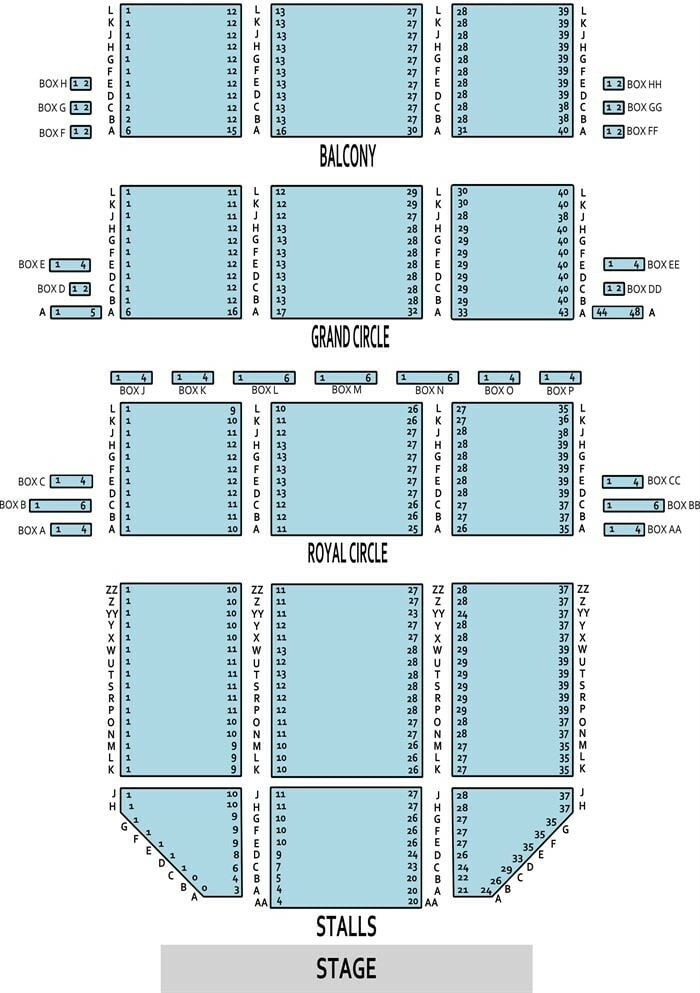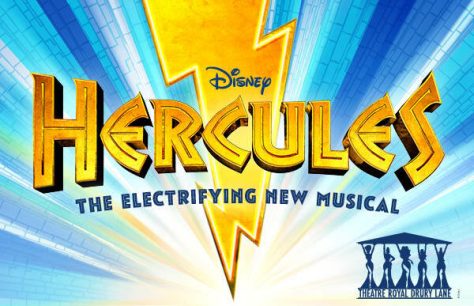The Theatre Royal Drury Lane or the Drury Lane theatre, as it is more commonly known is situated in Covent Garden, London. It is surrounded by numerous bars, varieties and the exciting bustling Covent Garden Piazza.
The theatre is one of the biggest theatres in London with a seating capacity of 2,200.
It is London’s oldest theatre. Since 1663 the Theatre Royal Drury Lane has provided entertainment for the masses and has been visited by every monarch since the Restoration.
The theatre has not one, but two, royal boxes and it was here that the public first heard both the National Anthem and Rule Britannia. Previous buildings were managed by the great actor David Garrick and the famous playwright Richard Brinsley Sheridan. The current, fourth, building was opened in 1812.
The theatre was renowned for its spectacular Victorian melodramas and pantomimes but since the 1920s its history has mirrored the development of the modern musical. From the original London productions of American musicals Rose Marie, The Desert Song and Show Boat, through Ivor Novello’s romantic operettas and Rodgers and Hammerstein’s groundbreaking post-war shows to The Producers and The Lord of the Rings, it has housed some of the finest spectacles on a London stage. My Fair Lady held the record as the theatre’s longest-running show for many years but Cameron Mackintosh’s record-breaking production of Miss Saigon, at ten years, is the current record holder.
The Theatre Royal Drury Lane still operates under this Royal Charter today and a copy is proudly displayed in the theatre foyer. The theatre was visited by Samuel Pepys and was where Charles II first encountered Nell Gwynne, who made her debut on the stage in 1665.
Killigrew built a second theatre, opening in 1674 and remaining in operation for 117 years. This building witnessed the triumphs of Thomas Betterton who played Hamlet when he was over 70, and Charles Macklin, who murdered a fellow actor in the Green Room and lived to be over 100. David Garrick became the manager in 1747 and introduced many reforms which have shaped modern theatre.
This theatre was demolished and replaced by a larger theatre to seat 3,600 people, designed by Henry Holland, in 1794. This building boasted the world’s first safety curtain but still burned down only 15 years later.
The fourth and present theatre opened in 1812. It was designed by Benjamin Wyatt and the front of house areas today are much as they were at the first performance. The building was financed by a committee recruited by the brewer Samuel Whitbread, and Lord Byron was Chairman of the Board. It was here that Edmund Kean became a star overnight with his performance of Shylock, and where the great clown Joseph Grimaldi gave his farewell benefit performance.
American singer and actress Edith Day starred in The Desert Song (1927-1928), in which Anna Neagle also made her stage debut. Show Boat premiered in 1928 with Cedric Hardwicke and Paul Robeson. Noël Coward had a major success with Cavalcade in 1931. The Drury Lane theatre also hosted most of Ivor Novello’s major successes.
During the Second World War the theatre was the home base for ENSA and received a direct hit from a gas bomb which, fortunately, did not explode but did destroy the rear of the auditorium.
The Drury Lane theatre was home to hit songwriting partnership Richard Rodgers and Oscar Hammerstein. Oklahoma! (1947-50) starring Howard Keel, Carousel (1950-1951), South Pacific (1951-1953) and The King and I (1953-1956), with Valerie Hobson and Herbert Lom, were all big hits.
My Fair Lady (1958-1963) opened with the original Broadway cast of Julie Andrews, Rex Harrison and Stanley Holloway, and Cecil Beaton’s costume designs, so familiar from the film version. Cameron Mackintosh’s revival of the show, starring Jonathan Pryce and Denis Waterman, transferred to the Drury Lane theatre from the National Theatre in 2001.
Camelot (1964-1965) was a hugely successful show, followed by Hello, Dolly! (1965-1967), originally starring Mary Martin with Dora Bryan taking over the leading role in 1966. Ginger Rogers starred in Jerry Herman’s musical Mame in 1969.
Michael Crawford became an overnight star in Billy (1974-1976), with Roy Castle succeeding him. Other notable shows that graced the stage at the Theatre Royal Drury Lane include A Chorus Line (1976-1979), the original production of Sondheim’s Sweeney Todd (1980) starred Denis Quilley and Sheila Hancock, The Best Little Whorehouse in Texas (1981), The Pirates of Penzance (1982) and the spectacular 42nd Street (1984-1989).
Cameron Mackintosh’s musical Miss Saigon (1989-1999) holds the record as the theatre’s longest running show, with a total of 4,263 performances.
Since the millenium the theatre has staged a number of big productions including The Producers (2004-2007), The Lord of the Rings (2007-2008), Oliver!(2009-2010), Shrek the Musical (2011-2013), and the hugely successful Charlie and the Chocolate Factory (2013-2017). Since then the theatre has been home to the musical 42nd Street.
Theatre Royal Drury Lane tickets in London:
To make a booking or to find ticket prices for Charlie & The Chocolate Factory and An Evening with Charlie Sheen at the Theatre Royal Drury Lane, London, you can select your ticket preferences at the top of this page. To get further information on
- 42nd Street (March – July 2017), please click here
Theatre tickets for Charlie & The Chocolate Factory and An Evening with Charlie Sheen at the Theatre Royal Drury Lane are booked through the Shows In London secure online booking system with credit card merchant services provided by Barclaycard.
Once tickets are booked through Shows In London you will receive an e-mail confirmation receipt and your tickets will be despatched to you within 48 hours of booking or alternatively left for your collection at the theatre Box Office.
At Shows In London we provide access to the full range of tickets from best seats to the cheapest ticket deals for all London West End Theatre, including half-price and discount ticket offers.





